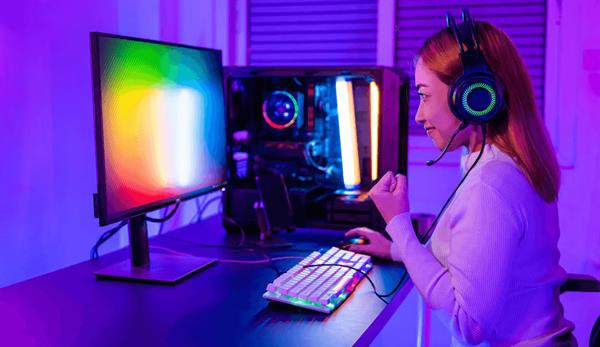How to Improve RGB Lighting Control with Logitech G Hub
Almost all gaming accessories have RGB lighting, and Logitech's gaming brand is no exception. The organization updated its LCC (Logitech Control Center) software, which allows users to fully operate its gaming equipment, giving it a new name: Logitech G Hub.
If you enjoy RGB lighting, here's how to manage the LED technology in your accessories, which Logitech refers to as LightSync. This blog also explains how to use non-distracting color presets, develop your own unique lighting settings, and sync all of your accessories to the same lighting style. If you do not like RGB lighting, we will also discuss how to turn it all off. After all, not everyone wants to work with strobing lights on their keyboards. So, let's get started.
Things You Will Need
- A Logitech equipment (mouse, keyboard, headset, mouse pad, etc.) that is compatible with LightSync.
- The Logitech G Hub app is necessary for managing, updating, and controlling LightSync.
- A little patience.
How to Begin
The initial step in controlling your LightSync lights is to download the Logitech G Hub for Windows PC or Mac. The G Hub is Logitech's authorized hardware management app for its devices. For easier access, it is suggested to keep this app pinned to your Windows task bar or macOS dock. Some users experience the issue of Logitech G Hub not Loading; they should shut down the PC and try again.
Once you have installed the G Hub, you will see a couple of prompts for changelogs or a guided tour. If you prefer to move directly to the customization procedure, you can bypass these.
Logitech's G equipment (G stands for "gaming") differs in terms of features and detail. In general, they are ranked from most to least options: keyboards, mouse, speakers, headphones, and genre-specific controllers (joysticks, wheels, etc.). Let us test some LightSync features with the Logitech G513 keyboard, which includes per-key RGB lights and can display a variety of colors and effects.
Adjust your light settings
Choose your LightSync-compatible Logitech keyboard from the main application screen, then make sure you are on the LightSync tab, which may be found in the top left sidebar.
Within that tab, you can totally disable the backlight, utilize the Freestyle mode to paint over certain keys or spots with your cursor, or choose Animations for some interesting (if annoying) light shows. To adjust the keyboard brightness on the G513, use the Fn + F7 buttons to switch between off and 4 distinct brightness levels.
To see what each of the effects listed does, choose it from the Presets "Effects" menu. Try experimenting with the settings to see which ones you like best—and which might give you a headache.
To sync your lighting setting with your other Logitech G equipment, simply click the "Sync Lighting Options" button located beneath your peripheral's image.
Create your own lighting presets
With some experimentation, you can make your own unique LightSync effects. To give you a better understanding of what the fundamental G Hub Freestyle controls perform and how to utilize them to create custom effects, the following tutorials describe some of the controls.
Click on the "LightSync" tab and choose "Freestyle." The sidebar offers options to utilize the "Color Brush" to digitally paint over certain keys, as well as "Quick Color" options that point out the WASD keys, function key row, number key row, modifier keys, and arrow keys automatically. Additionally, you may use the "Effect" drop-down menu to select and save various effects.
To see an animated LightSync effect, go to the "Animations" tab and click it. You can choose from a number of pre-made effects in the "Effect" drop-down menu. A few examples include "Ocean Wave," which combines blue and brown/white keys to start the tides smashing on a sandy beach; "Verticool," which blends cold and warm colors vertically; and "Contrastic," which alternates colors between zones.
By choosing "Reverse Cycle," "Cycle," "Bounce," or "Random" from the "Cycle" drop-down menu, you may also manage the cycle process. The application has a speed slider directly beneath the keyboard visual that lets you adjust the effect's speed in milliseconds.
Although it might appear confusing at first, there is a great deal of space for customization here. Experiment with the settings until you feel comfortable making your own effects.
Conclusion
Well done! You should now be able to control the lighting on all of your Logitech G accessories, create custom effects, and download other users' profiles from the G Hub community.





